It's not often you see a Mexican cactus fly, Copestylum mexicanum, nectaring on a Mexican sunflower, Tithonia rotundifolia.
At first glance, you may think the insect is a carpenter bee or bumble bee.
Then you see it hovering. Then you see its head. Then you see its stubby antennae.
Fly!
It's a large black syrphid fly, aka flower fly or hover fly.
The genus Copestylum includes more than 350 species in the new world, according to Martin Hauser, senior insect biosystematist with the Plant Pest Diagnostics Branch of the California Department of Food and Agriculture (CDFA).
Lynn Kimsey, director of the Bohart Museum of Entomology and UC Davis professor of entomology, says the female Mexican cactus fly lays its eggs in rotting or dying cactus tissue.
This fly, about 3/4 of an inch long, was a few inches short of a neighboring cactus, a torch cactus, Echinopsis spachiana.
The cactus is neither dying nor rotten.
Thankfully.
The Mexican cactus fly simply stopped to sip some nectar from the Mexican sunflower.
Attached Images:
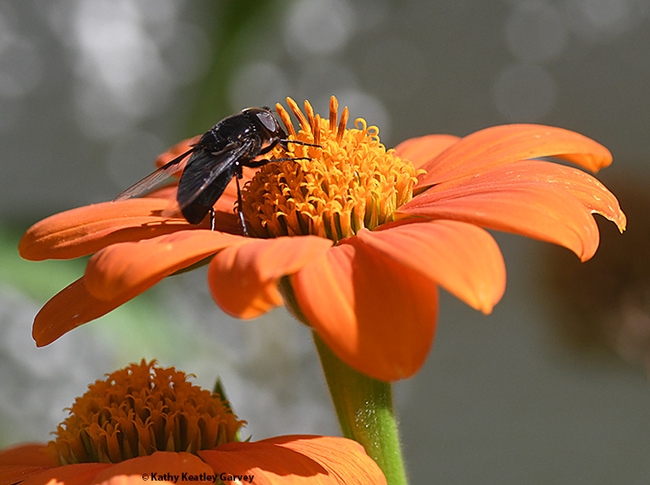
"Aah, nectar!" A Mexican cactus fly, Copestylum mexicanum, on a Mexican sunflower, Tithonia rotundifolia, in Vacaville. (Photo by Kathy Keatley Garvey)
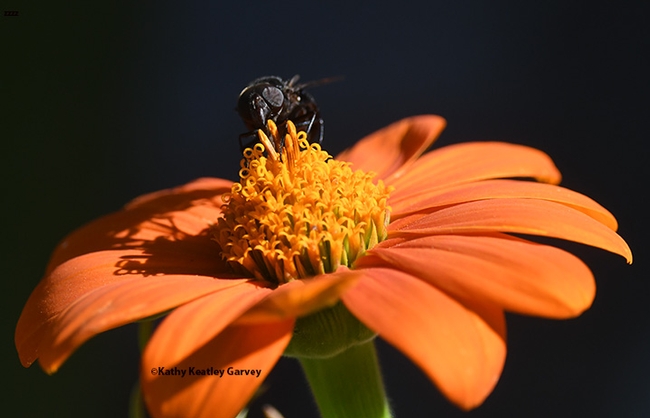
"Here's looking at you!" A Mexican cactus fly, Copestylum mexicanum, sips nectar from a Mexican sunflower, Tithonia rotundifolia, in Vacaville. (Photo by Kathy Keatley Garvey)
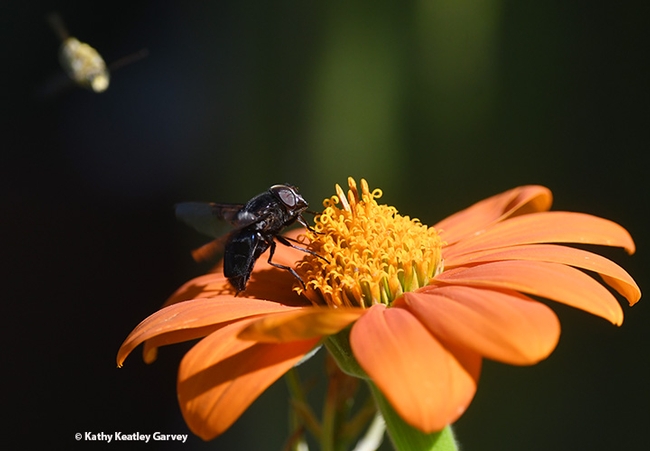
"My territory!" says a dive-bombing male longhorned bee, a Melissodes agilis, as it targets the Mexican cactus fly. (Photo by Kathy Keatley Garvey)
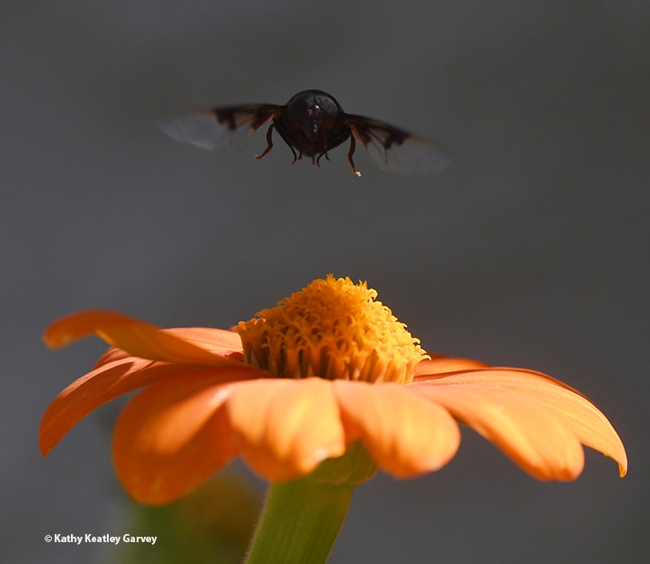
"Coming at ya!" A Mexican cactus fly sails over a Mexican sunflower. (Photo by Kathy Keatley Garvey
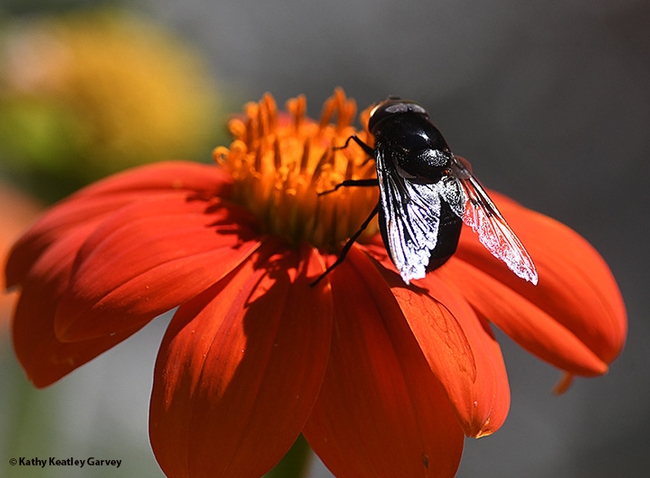
The wings of the Mexican cactus flower glisten in the morning sun. (Photo by Kathy Keatley Garvey)